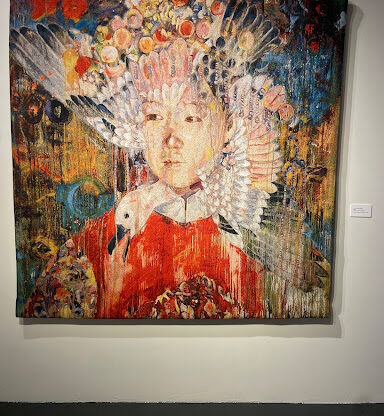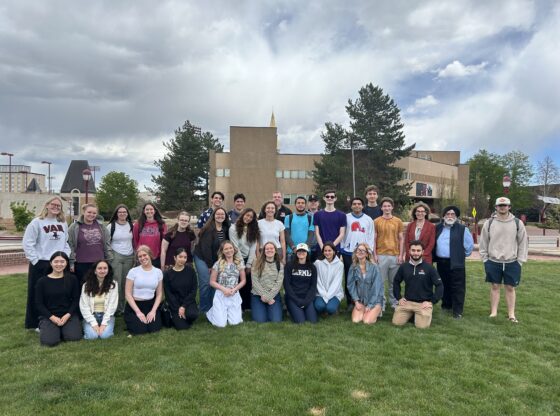As of Jan. 11, DU’s on-campus art gallery has a new exhibit featuring works by Hung Liu, a Chinese artist who passed away a few years ago. All exhibitions at the gallery are free of charge and are changed every few months. The current exhibit, “Hung Liu: Control and Freedom” will be running until March 24.
Hung Liu was born in China in 1948 during the communist regime and studied art in Beijing before moving to the U.S. in 1984 and continuing her studies in California. She was trained in the Socialist Realist art style that originated in the Soviet Union in the early 20th century, but her style was more shaped by the Cultural Revolution from the 1960s to 1970s when China was established as a communist nation.
Liu’s unique style, as portrayed in the exhibit, can be characterized by its vibrancy, use of various forms of media and her dripping effect that distorts the images. In addition, Hung Liu’s style can’t be discussed without explaining her inclination towards art that took a stance on politics and combatted the erasure of overlooked individuals from history.
The majority of her works include a portrait and incorporate cultural, historical and/or political imagery, which are accompanied well by a gallery guide made by the curators of the exhibit, Deborah Howard and Lauren Anuszewski. The guide explains the significance of 10 of Liu’s works, opening up an understanding of the intention behind them that viewers wouldn’t otherwise have.
Liu intended to give a face and a platform to the subjects of her art, who were often discovered through exploring historical archives. Through her art, she tells the story of prostitutes, laborers, refugees, soldiers, children and others who were impacted by the communist regime in China.
In an interview, Liu addressed her intention in portraying these strangers among other cultural-historical imagery. “I hope to wash my subjects of their ‘otherness’ and reveal them as dignified, even mythic figures on the grander scale of history painting,” she said.
Liu’s works were predominantly oil paintings with photos or cultural objects juxtaposed on or around the subject of the photo. The most striking of her works were the large-scale, detailed tapestries.



All three of these tapestries feature her characteristic dripping effect and include cultural symbols, including peaches, dragons and Mandarin Ducks, all of which have positive and hopeful significance, as explained on the gallery’s website. When visiting this exhibit, keep an eye out for these symbols as well as rats, butterflies, crickets, lotus flowers and the ‘scholar’s rock.’
Other pieces that are particularly compelling are “Relic VIII” and “Golden Lotus,” found on the south side of the exhibit.
“Relic VIII” is a critique of the commodification of women by portraying prostitutes from the late 19th century in a traditional position that minimizes their identity and agency. The dripping effect may represent how they are erased in history, but the detail in their faces embraces their humanity.
“Golden Lotus” juxtaposes modernity and tradition, resistance and conformation, including the photos the subjects were inspired by pasted onto her painting. The comparison of a young, revolutionary female soldier and an older bourgeois woman confined to their subordinate roles as females represents misogyny and suppression of women within the communist regime.


All of these images highlight the variety of works presented in the exhibit and the deep historical significance they hold. Visit the exhibit Tuesday through Sunday from 12-5 p.m. to see more of Hiu’s works, including self portraits, portrayals of recognizable historical figures and unique multi-media pieces.











